Rubus allegheniensis
A brumble with tasty berries producing fruits in July
Rubus allegheniensis common blackberry
Blackberries are the most diverse members of the genus Rubus, with possibly 122 species known in the eastern United States. All are members of the Rose Family, and only experts can distinguish some of them. Even more confusing is that there are known natural hybrids between various species.
This species takes form of an upright or arching shrub with stout, sharp prickles. The stems are in the form of arching canes that can produce new roots when they touch the ground. Each cane lasts only 2 years and produce flowers and fruit only in the second year. The leaves have 3-7, but mostly 5, palmately arranged leaflets that are woolly or velvety beneath, at least when young. The leaves are 3-8 in. long with serrate leaflets. The shrub can grow to a height of 5-8 feet.
The flower features 5 white petals, whose tips are sometimes pointed, 5 shorter sepals, and numerous stamens with yellow anthers. There is little or no floral scent. The common blackberry blooms in May and June in the western part of the state, but into July in cooler areas. The flowers are about 0.75 to 1.25 in. in diameter, borne in terminal short-stalked clusters, which sometimes appear lateral. Supporting stems are covered with sticky hairs. The blossoms are a good source of nectar for bees. A dry summer can reduce fruit production.
The berry is actually an aggregate fruit, made of many smaller individual fruits, each developing from a separate ovary. The blackberry fruit is initially red but ripens to black and forms from July to September. This is one of the few wild fruits that are still widely collected, even in suburban areas. The fruit is often sweet and can be eaten raw or used to make jellies, jams, or pies. It is also a food source for wildlife. The berries can be picked from wild plants if you are willing to brave the thorns and the risk of ticks and poison ivy. In recent years the blackberry bramble has had to contend with invasive species that grow in the same habitat. The most common of these are Morrow's honeysuckle, Japanese knotweed and multiflora rose, although there are others.
Common blackberry can form dense thickets in clearings, at edges of woods, along streams, and along roadsides. It also plays an important role in the forest, pioneering new openings and providing food and shelter for many animals. Commercial varieties of common blackberry have been created. Some of these are hybrids.
Habitat & Range
Grows in forest edges, open woods, meadows, and fields.
Present throughout the state.
Range: Grows throughout eastern Canada and eastern United States; in California and British Columbia.
| EMP: | FACU |
|---|---|
| NCNE: | FACU |
Phenology
Flowers May through June.
Fruits July through August.
Plant Codes
S-rank: No rank
G-rank: G5 (Secure)
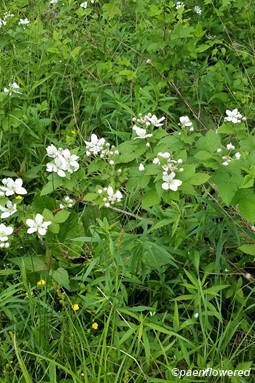

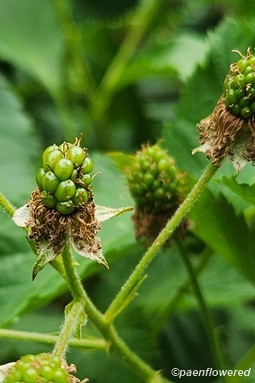
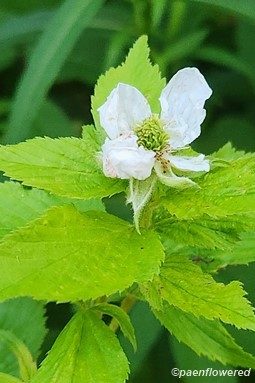
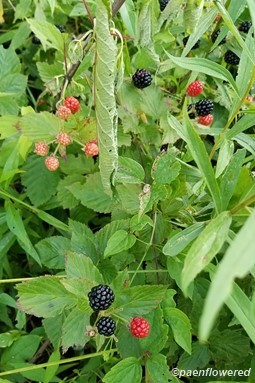
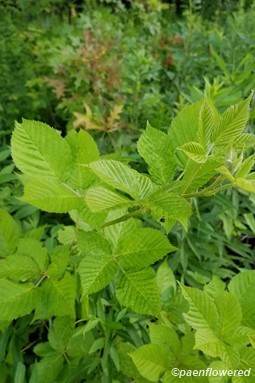
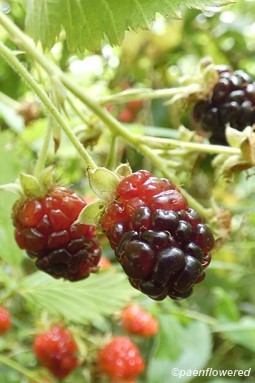
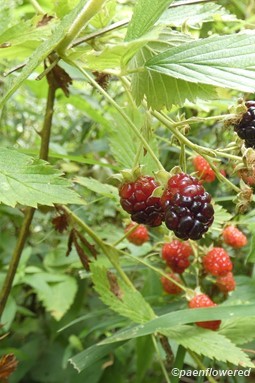



.jpg?v=638369984730000000)








Comments
Have you spotted this plant in your area? We'd love to hear about your experience! Share your comments or questions about the plant below. Comments are moderated before posting.